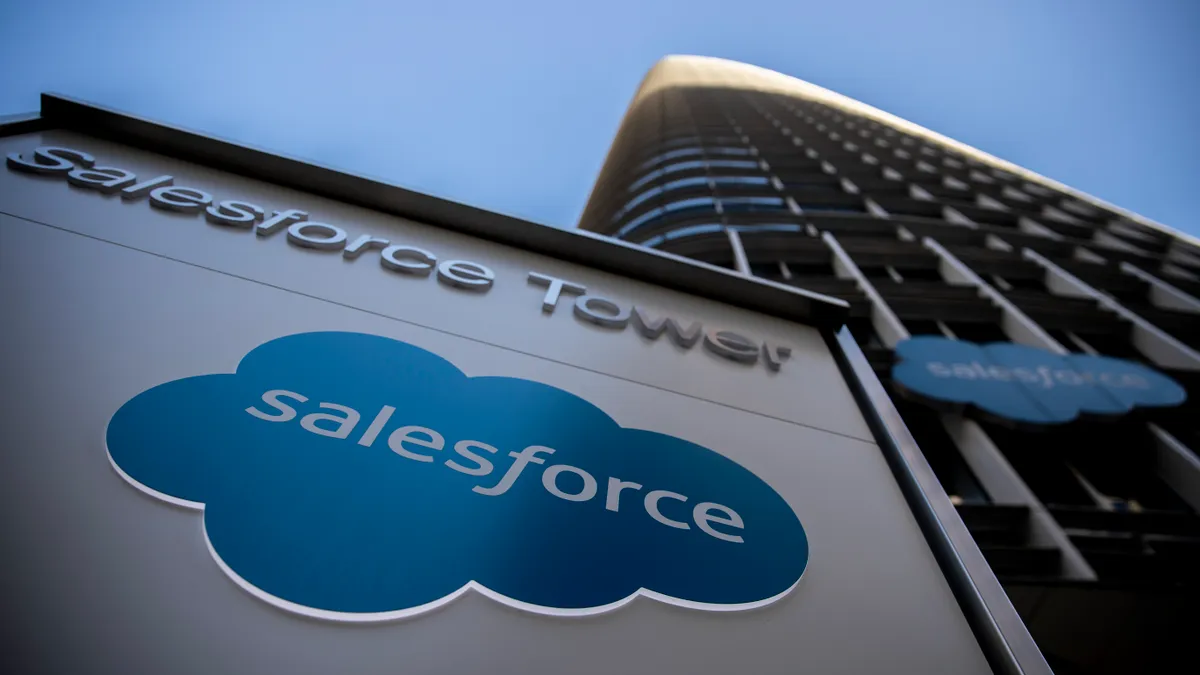In the past four decades, computers transformed from enormous, intimidating machines to personal devices that are a fixture of the workplace the home — and the body. Consumer demand sets the pace, with buyers vying for faster, sleeker and more powerful devices.
But to keep up with the rapidly changing industry, companies and their leadership have had to adapt to the modern computing era, innovating or risk being left behind. John Sculley is one such innovator who became the chief executive officer of Apple Inc. on April 8, 1983, a position he held until his departure in 1993.
Under Sculley's management, sales at Apple increased from $800 million to $8 billion. When he left Apple in May 1993, the company had $2 billion in cash and $200 million in debt.
In a conversation with CIO Dive, Sculley details just how much the technology landscape has evolved over the years. This conversation has been edited and condensed.
What it was like running Apple during your tenure? How did Apple operate in the market during the time you were there?
Sculley: That was in the early days of Moore's Law’s impact on computers at a commercial level. We were really the toolmakers of the industry. In the era that I was [at Apple], it was all about making computers personal, which seemed like an outrageous idea back in the early 1980s. I remember Ken Olsen, CEO of Digital Equipment Corp., said, "Why would anybody want their own computer?" Some things in hindsight become obvious.
When the internet became commercial in 1994, everything changed again and client server computers became the powerful building block for personal productivity.
How do those days compare to what's happening with tech today?
Sculley: At the time I was recruited to be Apple CEO, Steve Jobs was working on a totally radical idea which was that computers could be incredible productivity tools for nontechnical people to do creative things. Nobody was thinking about computers in that way in the early 1980s. They were all focused on bits, bytes, performance, costs, things of that sort.
Steve was unique because he said, "No, it's going to be about the experience" and it's going to be about how we enable nontechnical people to demystify technology and give them what he used to call "bicycles for the mind."
That's something we all take for granted today. I was lucky enough to be there when it was being created and when Steve Jobs and Bill Gates were talking about their noble cause of how they were going to change the world one person at a time, which as we all know, they did.
What were some of the big business issues Apple was dealing with at that time?
Sculley: The industry was sort of ganged up against Apple, because we were not only novel in the vision and the concepts that Steve came up with, but we did not use industry standard components. It became very controversial for us, but we were trying to convince business users to use a Macintosh system.
Whenever an RFP was written, it was usually guided by IBM or Microsoft or someone else who made certain that it was almost impossible for us to comply with the RFP, because it would say it has to be MS-DOS compatible, or meet other requirements which we couldn't achieve.
We were always fighting against the headwinds and we were dependent on convincing people that the things we did could be done better on a Mac than they could on anything else. There were many niche markets where we had great success.
We were very successful with consultants, because they needed to generate a lot of presentations on the fly. We were very successful with higher education, because they loved what we could do, and students loved it. We were very successful in anything that was graphically intensive. For instance, Boeing was one of the earliest adopters of our service, which they used to produce their maintenance manuals.
By the end of 1992, the Macintosh became the largest selling PC system in the world. On one hand, we were in a very enviable position, because now we were being taken seriously. On the other hand, the Intel 386 processor and Microsoft Windows software became powerful enough together that they duplicated many of the things that made us unique.
That's what eventually made the board nervous. They wanted to license the Mac software. I strongly opposed that. I felt that if we stopped making beautifully designed hardware, with our own software, that we would eventually drive the company into bankruptcy. I refused to do it, and I was fired.
Since the time you were at Apple, the way companies approach technology has changed dramatically. What are you working on now — any other examples of tech that might disrupt new industries?
Sculley: I'm currently looking at how cloud can be adopted in other vertical industries like finance and health. In the case of fintech, we are building a company called Lantern that will give people a path to interactively improve their credit scores. It’s all built on machine learning technology.
We can also provide banks a way of determining whether someone will qualify for a credit card before they make the request. Half the people that apply for credit today are turned down, and that's very expensive for the banks. It's a perfect example of how big, unstructured data is moving into the mainstream with machine learning.
The other company I'm involved with is called RxAdvance. RxAdvance is the most disruptive company that I've been involved with since I was at Apple. It's the first cloud platform for Pharmacy Benefit Management (PBM) services. We target chronically ill patients. They are the 5% of the population who spend $1.5 trillion a year.
They're the people who are most in need and most expensive to the health system and their profile is typically nine chronic care diseases. They tend to be low information people, they don't always have the best knowledge or nutrition. They don't always adhere to medications. The physicians writing the prescriptions don't have information about what other physicians are prescribing those same patients and consequently there's a lot of duplication of prescriptions.
There are a lot of side effects with different combinations of drugs. But if they physicians had more accurate information, that could be avoided. The projected savings from just drug-impacted medical costs for the healthcare system is estimated at $450 billion a year. If there was a significant reduction in drug-impacted medical costs, particularly for the most expensive patients who are chronically ill, and you could at the same time significantly improve the quality of life as many of these patients, the savings are large enough that it could make it possible for every American to have health insurance.
You don't hear politicians talking about whether there is a way to deliver healthcare at lower cost to the most expensive patients in the system, and the high-tech industry has traditionally steered clear of highly regulated industries like healthcare, but it’s an area where we think we can make a big impact.
Finally, I'm also involved in precision medicine. This is where data science is moving into an entirely new industry for high tech. With cloud computing and data analytics, we can do very deep analysis into things like the human genome, human proteins, epigenetics, etc. today. All these things can be analyzed with sophisticated high-tech solutions. That company will be announced in June.













